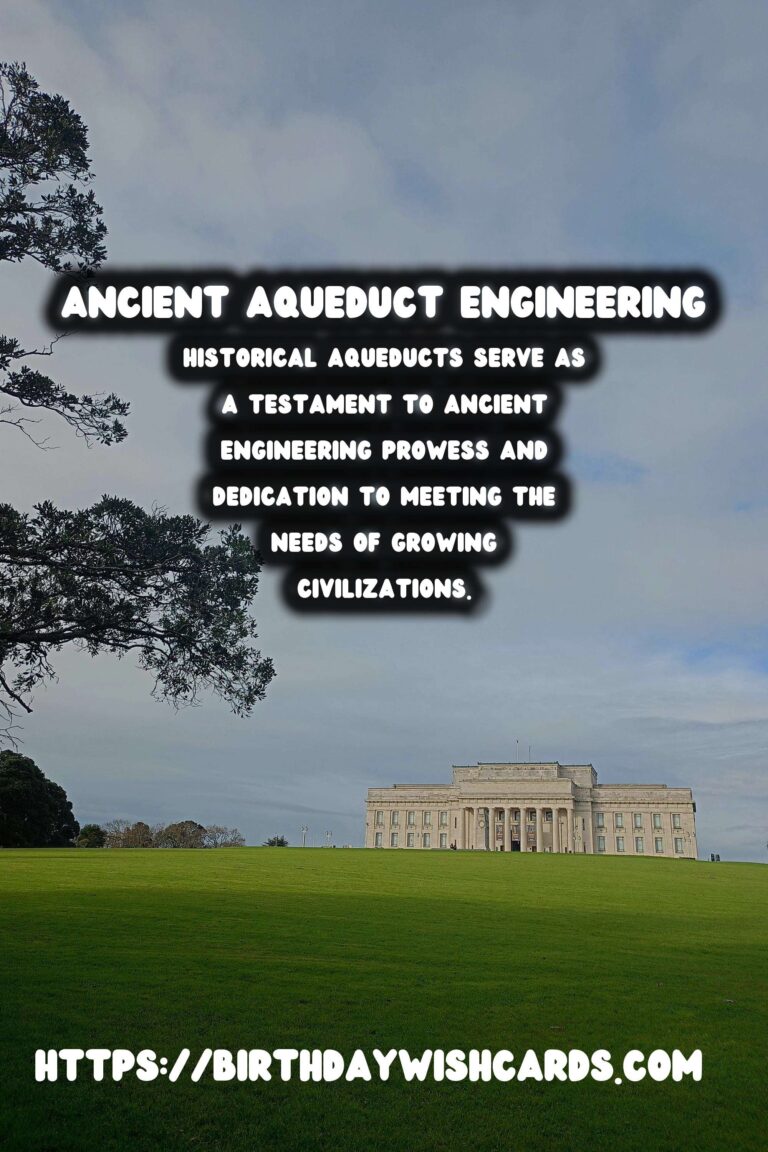
Introduction to Historical Aqueducts
Historical aqueducts serve as a testament to ancient engineering prowess and dedication to meeting the needs of growing civilizations. These remarkable structures played a crucial role in facilitating agriculture, urban growth, and overall societal advancement.
The Engineering Behind Aqueducts
The construction of aqueducts required meticulous planning and advanced engineering skills. Romans, in particular, perfected the art of building aqueducts with their careful consideration of gradients, materials, and support structures.
Engineers of the past utilized arches, gravity, and precise calculations to transport water over vast distances. Their understanding of environmental factors and resources available was pivotal in their successful construction.
Roman Aqueduct Examples
The Roman aqueducts stand out for their sheer scale and sophistication. The Aqua Appia, built in 312 BC, is among the earliest examples, extending approximately 16 kilometers to supply water to Rome.
Another incredible feat is the Aqua Marcia, constructed in 144 BC, heralded for its length of 92 kilometers, supplying pristine water from the mountains.
Societal Impact of Aqueducts
Aqueducts transformed societies by enabling the growth of population centers and fostering advancements in agriculture. The availability of clean water contributed significantly to public health and sanitation, markedly improving quality of life.
In cities, aqueducts ensured a constant supply of water to public baths, fountains, and private homes, supporting Rome’s famously advanced lifestyle.
Aqueducts and Agriculture
Beyond urban areas, aqueducts supported agriculture by irrigating fields, thus increasing food production and sustaining larger populations.
The introduction of aqueduct-based irrigation systems allowed civilizations to flourish, particularly in arid regions where water scarcity was a pressing challenge.
Legacy and Influence of Ancient Aqueducts
The principles and techniques pioneered by ancient engineers continue to influence modern water management systems. The concept of efficiently transporting water from remote sources remains integral in contemporary hydraulic engineering.
Today’s infrastructure often mirrors the ancient blueprint, echoing their brilliance in problem-solving and design.
Conclusion
The historical aqueducts are not only symbols of architectural and engineering greatness but also of the foresight and ingenuity required to sustain robust civilizations. Their enduring legacy continues to inspire modern engineering solutions.
Historical aqueducts serve as a testament to ancient engineering prowess and dedication to meeting the needs of growing civilizations. The Roman aqueducts stand out for their sheer scale and sophistication, with structures like the Aqua Appia and Aqua Marcia. 









#Aqueducts #Engineering




